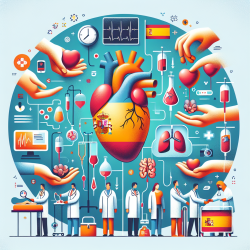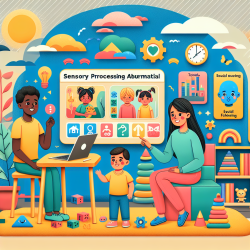Introduction
The Spanish model of organ donation and transplantation is often hailed as the gold standard worldwide. With its comprehensive approach, Spain has consistently achieved high donation rates, making it a role model for other countries seeking to improve their organ donation and transplantation systems. This blog explores the key features of the Spanish model, providing valuable insights for practitioners looking to enhance their skills and encourage further research in this vital area of healthcare.
Key Features of the Spanish Model
The success of the Spanish organ donation and transplantation program can be attributed to several core features:
- Three-tiered Governing Structure: Spain's system is organized at national, regional, and hospital levels, ensuring comprehensive oversight and coordination.
- Media Collaboration: A proactive relationship with the media helps build public trust and awareness, crucial for fostering a positive attitude toward organ donation.
- Dedicated Professional Roles: The appointment of donor transplant coordinators and tailored training programs for healthcare professionals ensure that the system operates smoothly and efficiently.
- Comprehensive Reimbursement Strategy: Financial barriers are minimized, with specific funding allocated for organ donation activities based on previous year's performance.
- Intensive Training Programs: Continuous education and training for healthcare professionals involved in organ donation and transplantation are prioritized, enhancing their skills and competencies.
Advanced Measures and Continuous Improvement
Spain's program is characterized by its culture of research, innovation, and continuous commitment to improvement. Some of the advanced measures implemented include:
- Donation after Circulatory Death (DCD): Spain has developed protocols for advanced DCD, expanding the donor pool and increasing the number of available organs.
- Expanded Donation Criteria: The program continually seeks to broaden the criteria for organ donation, ensuring that more individuals can contribute to saving lives.
- Living Donation Support: While Spain excels in deceased donations, there is potential for further improvement in living donations, an area that practitioners are encouraged to explore.
Encouraging Further Research and Implementation
Practitioners can benefit from delving deeper into the Spanish model to identify strategies that can be adapted to their local contexts. By understanding the intricacies of Spain's approach, healthcare professionals can advocate for policy reforms, enhance their skills, and ultimately improve organ donation and transplantation outcomes in their regions.
To further explore the Spanish model, practitioners are encouraged to read the original research paper, Ten Lessons From the Spanish Model of Organ Donation and Transplantation.
Conclusion
The Spanish model of organ donation and transplantation offers a wealth of insights for practitioners worldwide. By adopting key features and advanced measures from this model, healthcare professionals can drive improvements in their local systems, ultimately saving more lives through successful organ transplantation.










